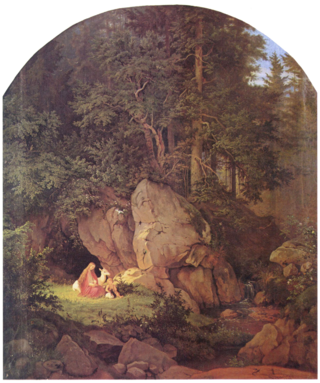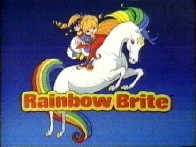Related Research Articles

Phantastes: A Faerie Romance for Men and Women is a fantasy novel by Scottish writer George MacDonald published in London in 1858.

The swan maiden is a mythical creature who shapeshifts from human form to swan form. The key to the transformation is usually a swan skin, or a garment with swan feathers attached. In folktales of this type, the male character spies the maiden, typically by some body of water, then snatches away the feather garment, which prevents her from flying away, forcing her to become his wife.

"The Master Maid" is a Norwegian fairy tale collected by Peter Christen Asbjørnsen and Jørgen Moe in their Norske Folkeeventyr. "Master" indicates "superior, skilled." Jørgen Moe wrote the tale down from the storyteller Anne Godlid in Seljord on a short visit in the autumn of 1842. Andrew Lang translated the tale to English and included it in his The Blue Fairy Book (1889). A later translation was made by George Dasent, in his Popular Tales from the North.

"Allerleirauh" is a fairy tale recorded by the Brothers Grimm. Since the second edition published in 1819, it has been recorded as Tale no. 65. Andrew Lang included it in The Green Fairy Book.
The Golden Branch is a French literary fairy tale written by Madame d'Aulnoy. Andrew Lang included it in The Red Fairy Book.
The Sprig of Rosemary is a Catalan fairy tale from Spain collected by Dr. D. Francisco de S. Maspons y Labros in Cuentos Populars Catalans. Andrew Lang included it in The Pink Fairy Book.

Go I Know Not Whither and Fetch I Know Not What is a Russian fairy tale collected by Alexander Afanasyev in Narodnye russkie skazki.

In folklore and fantasy, an enchanted forest is a forest under, or containing, enchantments. Such forests are described in the oldest folklore from regions where forests are common, and occur throughout the centuries to modern works of fantasy. They represent places unknown to the characters, and situations of liminality and transformation. The forest can feature as a place of threatening danger, or one of refuge, or a chance at adventure.

The Charwoman's Shadow is a 1926 fantasy novel by Anglo-Irish writer Lord Dunsany. It is among the pioneering works in the field, published before the genre was named "fantasy".

"The Love for the Three Oranges" or "The Three Citrons" is an Italian literary fairy tale written by Giambattista Basile in the Pentamerone. It is the concluding tale, and the one the heroine of the frame story uses to reveal that an imposter has taken her place.
"Ye Xian" is a Chinese fairy tale that is similar to the European Cinderella story, the Malay-Indonesian Bawang Putih Bawang Merah tale, the Vietnamese Tấm Cám story, and stories from other ethnic groups including the Tibetans and the Zhuang. It is one of the oldest known variants of Cinderella, first published in the Tang dynasty compilation Miscellaneous Morsels from Youyang written around 850 by Duan Chengshi. Chinese compilations attest several versions from oral sources.

Dream Chronicles: The Book of Air is a 2010 adventure and puzzle casual game developed by KatGames, originally published by PlayFirst. It is the fourth installment in the Dream Chronicles series, the third sequel to 2007's award-winning game Dream Chronicles, and the opening part of the second unfinished trilogy titled Lyra's Destiny.

Dream Chronicles, first released in 2007, is a series of adventure, hidden object and puzzle casual games. It was created by Miguel Angel Tartaj for KatGames and published by PlayFirst. It's also the name of the first game in the series.
Fairer-than-a-Fairy is a literary fairy tale published anonymously in the 1718 fairy tale collection Nouveaux contes de fées. It is attributed to the Chevalier de Mailly. Andrew Lang included it in The Yellow Fairy Book.

World of Winx is an Italian Flash animated television series and a spin-off of Winx Club. The series was created by Iginio Straffi. Twenty-six episodes were produced in two seasons, the first of which was premiered as a Netflix original series on 4 November 2016.

Rainbow Brite is a 1980s animated series based on Hallmark's media franchise of the same name. Produced by DIC Enterprises with animation provided by Japanese TMS Entertainment, the show began as a part of DIC's Kideo TV syndicated anthology package. In this series, Rainbow Brite uses her magical belt to protect the colors of Rainbowland from the bumbling Murky & Lurky.
The Beautiful Palace East of the Sun and North of the Earth is a Swedish folktale collected from Smaland by Swedish folktale collectors George Stephens and Gunnar Olof Hyltén-Cavallius. It features versions of the swan maiden, a mythic female character that alternates between human and animal shapes.
Trandafiru is a Romanian fairy tale collected by Arthur Carl Victor Schott and Albert Schott in the mid-19th century and sourced from Banat.
References
- ↑ Colin Manlove, Christian Fantasy: from 1200 to the Present p nope168-9 ISBN 0-268-00790-X
- ↑ "Unlocking Wonder in 'The Golden Key'", Ruth Sanderson
- ↑ Anderson, Celia Catlett. "The Golden Key: Milton and MacDonald", For the childlike : George MacDonald's fantasies for children, (Roderick McGillis, ed.), Metuchen, N.J. : Scarecrow Press, 1992
- ↑ The Golden Key 1967 edition at WorldCat.
- ↑ The Golden Key, Amazon